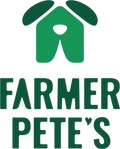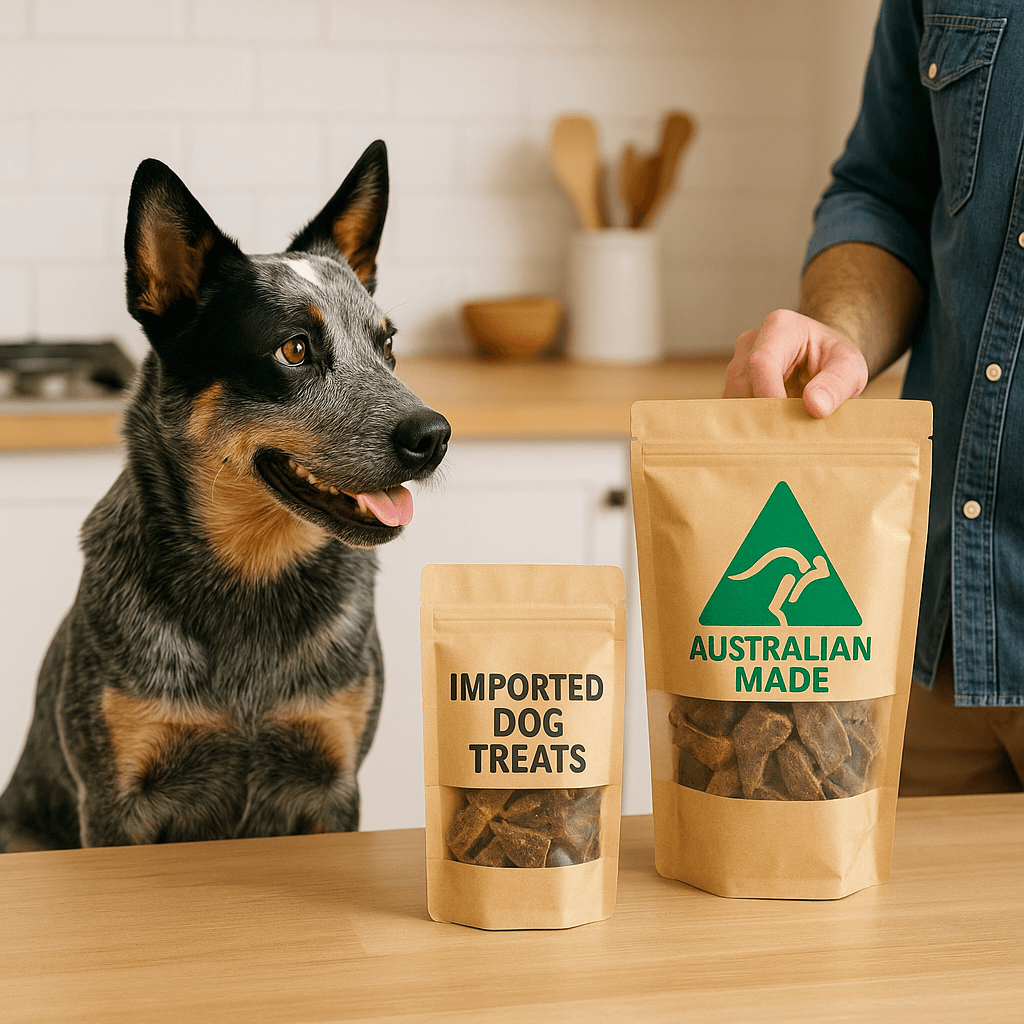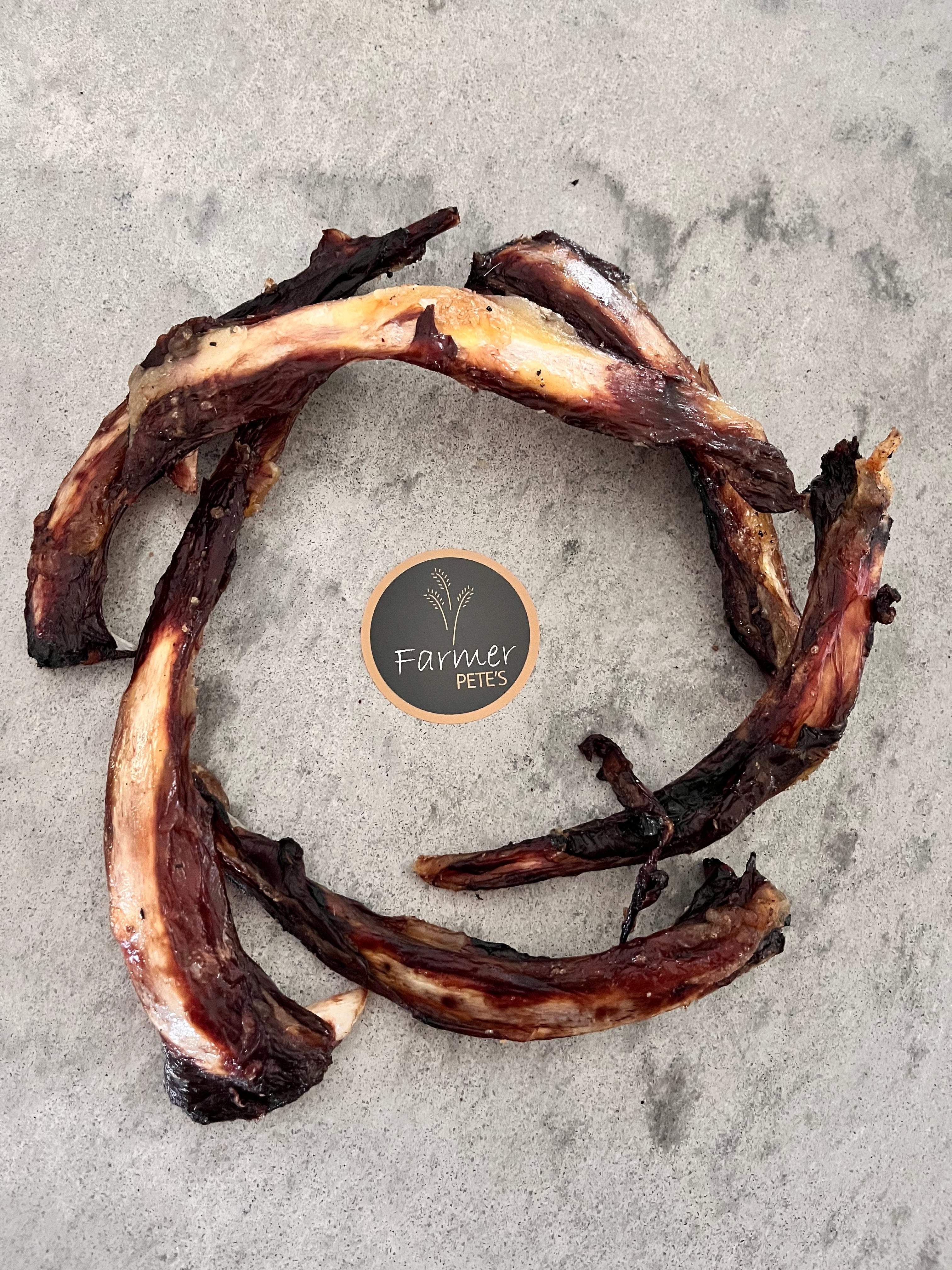I never really thought of this as a potential problem in my home as I always have breeds known for being placid and easy to get along with each other. That was until Miss Holly (AKA Queen Piranha) came into our life.
Holly is a small breed dog and is very accustomed to sitting on my lap, sleeping on our bed, and riding on the Golf Cart around our property by my side.
It wasn’t until recently that Miss Holly started becoming aggressive towards other family members dogs and attacking them for no reason when they came close to me, or sat on her seat in the buggy, or came close to her treat, Farmer Pete’s treats of course.

Without realising it I encouraged this behaviour. Firstly, I thought it was cute and that she loved me so much that she wanted to protect me, I would call her and speak to her and give her pats. I even gave her the nick name of Queen Piranha. This just reinforced her behaviour, and I was blind to it.
Then it hit me, this is not appropriate, the other dogs fear her, and they were bigger than Holly. I had made my cute little loveable lap dog ENTITLED!
As a dog owner, one of the most concerning and confusing behaviours to witness is aggression in your furry friend, especially when it seems to be directed towards others only when you are present. This puzzling situation can leave you (as it did me) wondering what might be causing your dog's aggression and how to address it.
Hence, I began researching this type of behaviour and found it to be classified as aggression in her, but there are many types and causes for aggression in dogs. Understanding aggression in dogs and knowing how to manage it is crucial for the safety of both the dog and the people and animals around them.
How To Understand The Common Types Of Aggression In A Dog
Aggression in dogs can manifest in various forms, such as fear aggression, territorial aggression, possessive aggression, and more. It's essential to identify the type of aggression and its triggers to address it effectively.
Here's a comprehensive guide to our 15 top tips for understanding and managing your dog’s aggression:
1. Recognise the Signs of Aggression
- Growling, snarling, or snapping: These vocal and physical cues indicate that a dog is feeling threatened or uncomfortable. It's a warning sign that should not be ignored.
- Biting: When a dog resorts to biting, it's often a last resort to protect themselves or establish dominance. Dogs may bite or attempt to bite when provoked or threatened.
- Raised hackles: The raised fur along a dog's back is a clear sign of heightened arousal or agitation or when it feels threatened.
- Stiff body language: Dogs may display stiff, rigid postures when they feel threatened, preparing themselves for potential aggression.
- Avoidance or submissive behaviour: Some dogs, especially those with fear aggression, may show avoidance or submission by cowering, tucking their tail, or rolling onto their backs.
2. Types of Aggression
- Fear Aggression: This often stems from past traumatic experiences, such as abuse or neglect. Fearful dogs may react aggressively to situations they perceive as threatening.
- Territorial Aggression: Dogs are territorial by nature and may become aggressive when they perceive an intruder or threat to their territory.
- Dominance Aggression: This type of aggression is often related to a dog trying to establish itself as the "alpha" in a social hierarchy. It's more common among intact males.
- Possessive Aggression: Dogs may become aggressive when guarding valuable resources, like food, toys, or even people.
- Redirected Aggression: Dogs may redirect their aggression towards a person or animal that was not the original target when they are highly aroused or frustrated and cannot reach the source of their frustration.
3. Identify Triggers
Careful observation is key to understanding what triggers your dog's aggressive behaviour. Keep a record of specific situations, people, or animals that provoke aggression. Common triggers include strangers, other animals, loud noises, and certain situations.
Resource guarding is another common cause of aggression in dogs. Your dog might be possessive of you, their favourite toy, or even their food. When someone else approaches you or something your dog values, they may become aggressive to protect their resources.
4. Protective Instincts
One of the primary reasons why dogs can exhibit aggressive behaviour when their owners are present is their natural protective instinct. Dogs are pack animals and often see their human family members as part of their pack. When they perceive a potential threat or danger to their pack, they may respond with aggression as a way to protect you and themselves.

5. Fear or Insecurity
In some cases, a dog's aggression towards others when you are around may stem from fear or insecurity. Your presence can provide a sense of security for your dog, and when they encounter unfamiliar people or animals, they may react aggressively as a defence mechanism. This aggression is their way of trying to remove the perceived threat.
6. Lack of Socialisation
A lack of proper socialisation during a dog's early development stages can lead to aggression later in life. If your dog was not exposed to a variety of people and other dogs in a positive way when they were a puppy, they may not know how to interact with unfamiliar individuals. This can result in aggressive behaviours when new people are introduced.

7. Previous Traumatic Experiences
Dogs that have experienced traumatic events or negative interactions with people in the past may develop aggression as a defence mechanism. They may be carrying emotional scars from previous encounters that make them more prone to aggressive reactions when confronted with unfamiliar individuals.
8. Consult a Professional
If your dog's aggression is causing concern or is escalating, it's essential to consult with a qualified professional. A veterinarian can rule out underlying medical issues, while a certified dog trainer or behaviourist can assess the aggression's cause and create a tailored training plan to address the aggression and/or develop a personalised behaviour modification plan.
9. Behaviour Modification Techniques
- Gradual Exposure: Gradual exposure to new people and situations can help desensitise your dog to potential triggers. Start with controlled introductions and gradually increase the level of interaction as your dog becomes more comfortable.
- Desensitisation and Counterconditioning: Gradual exposure to the trigger under controlled circumstances while pairing it with positive experiences and rewards, e.g., Farmer Pete’s Treats of course. This can help change the dog's emotional response.
- Training and Obedience: Basic obedience training, such as commands like "sit" and "stay," can establish better control over your dog and improve communication between you and your dog.
- Positive Reinforcement: Reward good behaviour consistently with treats, praise, and affection to encourage desirable conduct. Positive reinforcement training methods can be highly effective in modifying aggressive behaviour. Reward your dog for calm and non-aggressive behaviour when others are present. This can help your dog associate the presence of others with positive experiences.
10. Avoid Punishment
Avoid punishing your dog for aggressive behaviour and don’t use punitive measures like physical punishment or harsh corrections. These can escalate aggression and can exacerbate the problem and increase fear and anxiety. Instead, focus on positive reinforcement and redirection techniques.
11. Exercise and Mental Stimulation
Adequate exercise and mental stimulation are crucial for reducing stress and anxiety in dogs, potentially leading to a decrease in aggressive behaviour
12. Safe Environment
Manage your dog's environment to prevent situations that trigger aggression. Use tools like baby gates, leashes, or crates when necessary.

13. Medication
In severe cases, medication prescribed by a veterinarian, such as anti-anxiety medications, may be necessary to help manage aggression.
14. Be Patient
Aggression management takes time and patience. Consistency in implementing behaviour modification techniques is key to long-term success and in addressing your dog's aggression. Ensure that all family members and visitors follow the same rules and guidelines to avoid confusing your dog.
15. Legal Responsibilities
Be aware of your legal responsibilities as a dog owner, especially if your dog has a history of aggression. Comply with leash laws and take precautions to ensure public safety.
In Conclusion
Understanding why our Miss Holly displayed aggression towards others when I am around (although flattering) was the first step towards addressing and managing her behaviour. While it can be challenging, with patience, training, and professional guidance, we are on the way to helping her become more comfortable and less aggressive in the presence of others.
Our Miss Holly (AKA Queen Piranha) is exceptional, and what works for her may not work for another, so tailor your approach to your dog's specific needs and personality.
Remember that every dog is unique, understanding and managing aggression in dogs requires a holistic approach that considers the dog's individual temperament and circumstances, so, the approach to managing aggression may vary from one individual to another.
Seek professional guidance, and stay consistent, when working with an aggressive dog. It's essential to prioritise safety to ensure a harmonious relationship between your dog and the people and animals around them.



